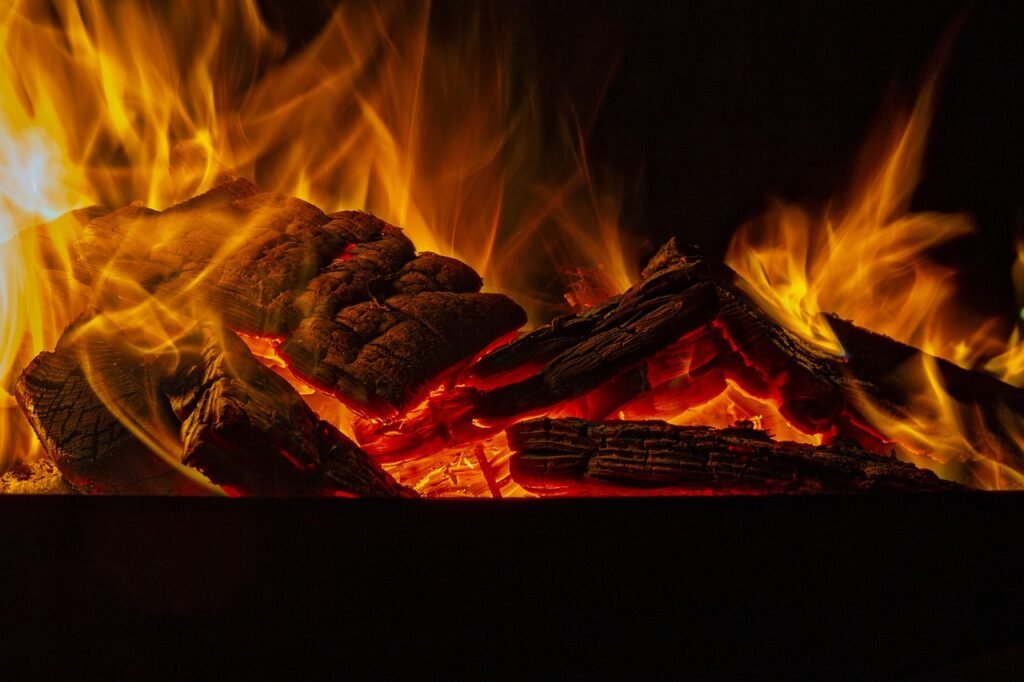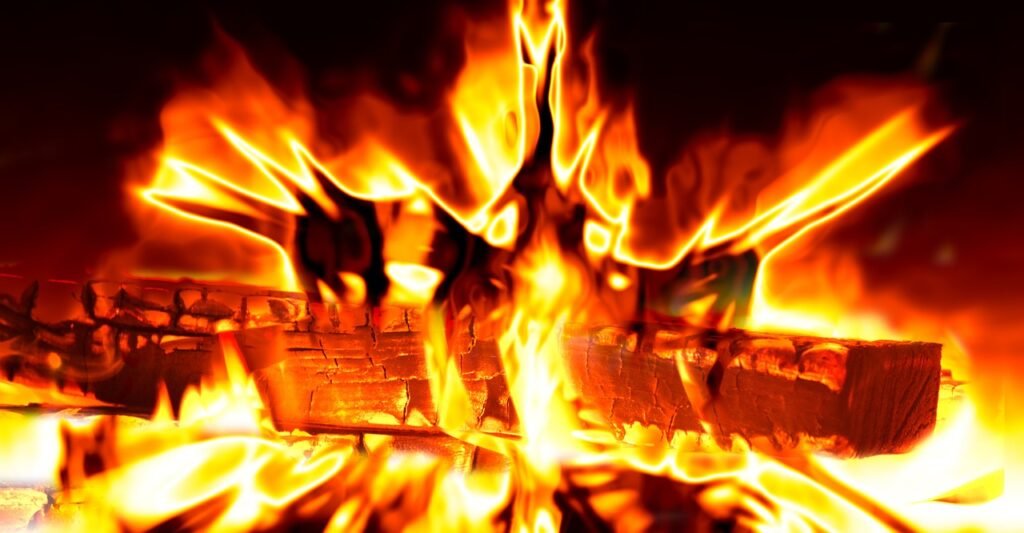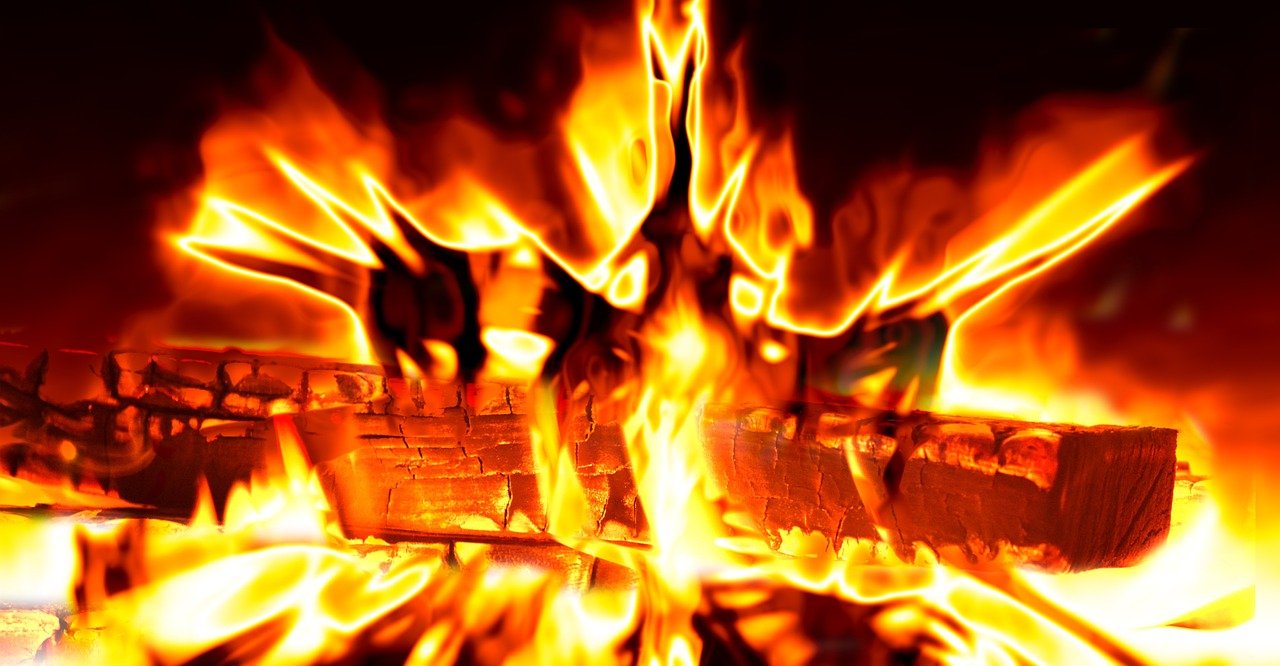Imagine sitting by a cozy fire, with the warmth enveloping you and the soft crackling sound calming your soul. Now, imagine enhancing that experience by making your fireplace more efficient and environmentally friendly. In this article, we will explore the concept of fireplace eco-upgrades and how they can enhance the efficiency of your fireplace, not only providing a comfortable ambiance but also reducing your carbon footprint. From simple modifications to advanced upgrades, discover how you can make your fireside experience even more enjoyable and eco-conscious.

This image is property of pixabay.com.
Upgrade Your Fireplace With These Eco-friendly Options
Update Your Fireplace Insert
If you have a traditional fireplace with an open hearth, it may be time to consider updating your fireplace insert. An old insert can be a major source of heat loss, as it lacks the energy-efficient features of newer models. By upgrading to a modern fireplace insert, you can increase the efficiency of your heating system and reduce energy waste.
A fireplace insert is a specially-designed unit that fits directly into your existing fireplace opening. It is typically made of cast iron or steel and is equipped with a closed combustion system. This means that instead of relying on open combustion for air intake, the insert draws in air from outside the home, ensuring a more controlled and efficient burn.
Not only do fireplace inserts improve heating efficiency, but they also enhance safety. Traditional fireplaces are notorious for emitting harmful combustion byproducts, such as carbon monoxide. A fireplace insert, on the other hand, is engineered to burn fuel more efficiently, minimizing the release of toxic gases into your home.
When selecting a fireplace insert, opt for models that are certified by reputable organizations, such as the Environmental Protection Agency (EPA). These certified inserts meet strict emissions standards and are designed to maximize heat output while minimizing environmental impact.
Upgrade to a High-Efficiency Wood Burning Stove
If you prefer the ambiance and warmth of a wood-burning fireplace, consider upgrading to a high-efficiency wood burning stove. These stoves are designed to burn wood more efficiently, which means they produce more heat with less fuel consumption.
High-efficiency wood burning stoves use advanced combustion technology to extract maximum heat from the wood. They often incorporate features such as secondary burn systems and catalytic converters, which help to burn off excess smoke and gases, ensuring a cleaner and more efficient burn.
In addition to their improved efficiency, high-quality wood burning stoves are also known for their aesthetic appeal. They come in a variety of designs and finishes, allowing you to find a stove that complements your home decor.
When choosing a wood burning stove, look for models that have been certified by the EPA. These certified stoves meet strict emissions standards and are designed to minimize environmental impact. By upgrading to a high-efficiency wood burning stove, you can enjoy a cozy fire while minimizing your carbon footprint.
Enhance The Efficiency Of Your Fireside With These Eco-upgrades
Install a Gas Fireplace Insert
If you want the convenience of a fireplace without the hassle of wood or pellets, installing a gas fireplace insert is an excellent option. Gas fireplace inserts offer the ambience of a traditional fireplace with the added benefits of energy efficiency and convenience.
Gas inserts are powered by natural gas or propane, which allows for easy and clean combustion. With a simple flick of a switch or push of a button, you can ignite your gas fireplace and enjoy the warmth and beauty of a fire. Many models even come with remote controls, allowing you to adjust the flame height and heat output to your preference.
Gas fireplace inserts are a popular choice among homeowners because they require minimal maintenance. Unlike wood or pellet-burning options, gas inserts don’t produce ash or require regular cleaning. They also eliminate the need for stocking and storing firewood, making them a hassle-free heating solution.
Before installing a gas fireplace insert, it’s important to have a professional assess your existing fireplace and flue system to ensure compatibility. A professional installation will ensure safe operation and optimal performance of your gas insert.
Convert Your Fireplace to Electric
If you desire the look of a traditional fireplace but want a low-maintenance and energy-efficient option, consider converting your fireplace to electric. Electric fireplace inserts offer the charm and ambiance of a real fire without the need for venting or fuel combustion.
Electric fireplace inserts are essentially equipped with a heater and simulated flame effects. The easy installation process involves placing the insert into your existing fireplace and plugging it into a standard electrical outlet. With the push of a button, you can instantly create a cozy atmosphere.
One of the key advantages of electric fireplace inserts is their versatility. Many models come with adjustable flame effects and heat settings, allowing you to customize the appearance and warmth of your fire to suit your preferences. Some advanced models even feature built-in thermostats and timer functions, providing even more convenience and control.
Since electric fireplace inserts do not require venting, they are an excellent option for homes that lack a chimney or suitable flue system. Additionally, they are energy-efficient, as they don’t produce any combustion byproducts or waste heat.

This image is property of pixabay.com.
Consider a Pellet Stove
If you’re looking for a sustainable and efficient heating option, a pellet stove may be the perfect choice for your home. Pellet stoves burn compacted sawdust pellets, a renewable biomass fuel made from recycled wood waste.
Pellet stoves work by automatically feeding the pellets into a combustion chamber, where they are ignited and burned. This automated feeding system eliminates the need for constant manual feeding and ensures a consistent heat output. Many pellet stoves also offer programmable thermostats, allowing you to conveniently control the temperature settings.
Pellet stoves are designed to maximize heat output while minimizing particulate emissions. They are highly efficient, with some models boasting efficiency ratings of over 80%. Additionally, the use of compressed pellets helps reduce waste by utilizing recycled materials.
When considering a pellet stove, it’s important to factor in the cost of pellets and their availability in your area. Pellets are typically sold in 40-pound bags, and the average household may require several bags per month during the heating season. However, they are often more cost-effective than other fuel options, such as propane or oil.
Optimize Your Chimney
To ensure your fireplace operates efficiently and safely, it’s essential to optimize your chimney. A properly functioning chimney allows for the efficient release of smoke and combustion byproducts, helping to prevent the accumulation of harmful gases in your home.
Regular chimney inspections and cleanings are crucial for maintaining optimal performance. Over time, creosote, a highly flammable substance, can build up inside the chimney. This build-up can lead to chimney fires and blockages, hindering proper air flow. By scheduling annual chimney cleanings, you can remove creosote and other debris, reducing the risk of fires and ensuring proper ventilation.
In addition to cleanings, consider installing a chimney cap or spark arrestor. These devices help prevent animals and debris from entering the chimney, ensuring efficient operation and preventing potential blockages.
Furthermore, it’s important to address any structural issues with your chimney. Cracked or deteriorating bricks or mortar can compromise the integrity of the chimney, allowing heat and smoke to escape into your home. Have a professional inspect your chimney and make necessary repairs to ensure optimal performance and safety.

This image is property of pixabay.com.
Improve Insulation Around Your Fireplace
Proper insulation around your fireplace plays a significant role in optimizing its efficiency. If there are gaps or cracks, heat can escape, wasting energy and reducing the effectiveness of your heating system. By improving insulation, you can minimize heat loss and increase the overall efficiency of your fireplace.
Start by inspecting the area around your fireplace for any visible gaps or cracks. These can often be found between the hearth and the surrounding walls or in the gaps between the fireplace insert and the existing fireplace opening. Seal these gaps using a high-temperature sealant or fire-resistant insulation.
Consider adding insulation around the chimney chase or flue pipe if it passes through unheated areas of your home, such as the attic. Insulating the flue pipe protects against heat loss and helps maintain a consistent temperature in your living space.
By properly insulating your fireplace, you can retain more heat within your home and reduce energy waste. This not only enhances your comfort but also lowers your heating costs and reduces your environmental impact.
Utilize Eco-Friendly Fire Starters
When it comes to lighting your fireplace, consider opting for eco-friendly fire starters. Traditional fire starters, such as newspaper and chemical-laden firelighters, can release harmful substances into the air and contribute to air pollution.
Instead, choose natural and eco-friendly alternatives, such as fatwood sticks, kindling, or untreated wood shavings. These fire starters are typically made from sustainable materials and produce minimal smoke or pollutants when ignited.
Another eco-friendly option is to make your own fire starters using recycled materials. One popular DIY option is to create fire starters using toilet paper rolls, lint, and melted wax. These homemade fire starters are inexpensive, effective, and reduce waste by repurposing items that would otherwise end up in the landfill.
By using eco-friendly fire starters, you can enjoy a cozy fire while minimizing your carbon footprint and reducing air pollution.
Never Burn Treated Wood
One essential rule to follow when using your fireplace is to never burn treated wood. Treated wood often contains chemicals, such as arsenic, copper, and chromium, which are hazardous to human health and the environment. These chemicals can be released into the air when burned, posing a significant risk to you and your family.
Treated wood is commonly used in construction, particularly for outdoor projects such as decks and fences. It is typically treated with preservatives to protect against decay and insect damage. As a result, burning treated wood can release toxic fumes and particles, which can cause respiratory issues and other health problems.
To ensure a safe and eco-friendly fire, only burn untreated, seasoned firewood. Seasoned firewood refers to wood that has been dried for at least six months. It is important to note that freshly cut or green wood contains high moisture content, resulting in inefficient and smoky fires.
By strictly adhering to the rule of never burning treated wood, you can protect the air quality in your home and reduce exposure to harmful chemicals.
Explore Heat Recovery Ventilators (HRVs)
Heat Recovery Ventilators (HRVs) are devices that capture and utilize heat from exhaust air to preheat incoming fresh air. They are designed to improve energy efficiency by reducing heat loss and ensuring a continuous supply of fresh air.
An HRV works by extracting heat from stale exhaust air using a heat exchanger. The heat is then transferred to incoming fresh air before it enters your living space. This process helps maintain a comfortable and healthy indoor environment while minimizing heat loss.
HRVs are particularly beneficial in homes with a tightly sealed envelope. When a home is well-insulated and airtight, fresh air exchange can be limited, leading to stagnant indoor air. HRVs help address this issue by providing fresh air while conserving energy.
By installing an HRV, you can enhance the efficiency of your heating system and improve indoor air quality. This is especially important during the colder months when the windows are typically closed, and natural ventilation is reduced.
If you’re interested in exploring HRVs for your home, it is recommended to consult with a professional HVAC technician. They can assess your home’s ventilation needs and recommend the most suitable HRV system.
In conclusion, enhancing the efficiency of your fireplace with eco-upgrades not only reduces energy waste but also helps create a healthier and more sustainable home. Whether you choose to update your fireplace insert, upgrade to a high-efficiency wood burning stove, install a gas fireplace insert, convert to electric, or consider a pellet stove, each option provides its unique benefits. By optimizing your chimney, improving insulation, utilizing eco-friendly fire starters, never burning treated wood, and exploring HRVs, you can further enhance the eco-friendliness of your fireplace. Embrace these eco-upgrades and enjoy the warmth and beauty of a fireplace while making a positive impact on the environment.
Discover The Best Eco-friendly Enhancements For Your Fireplace




